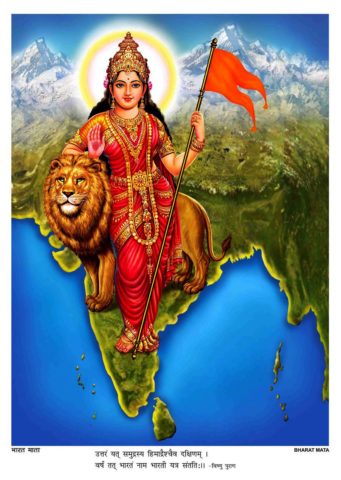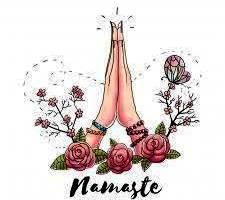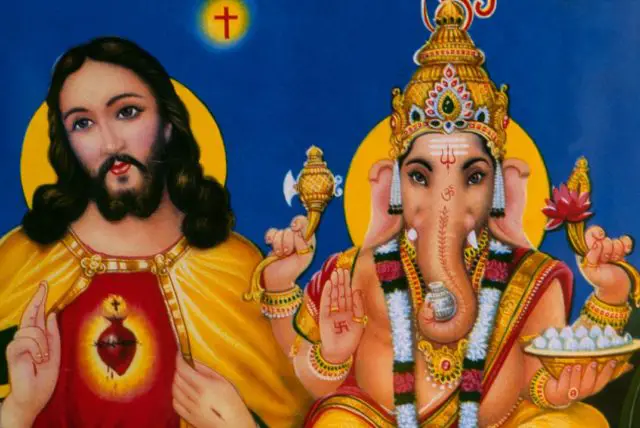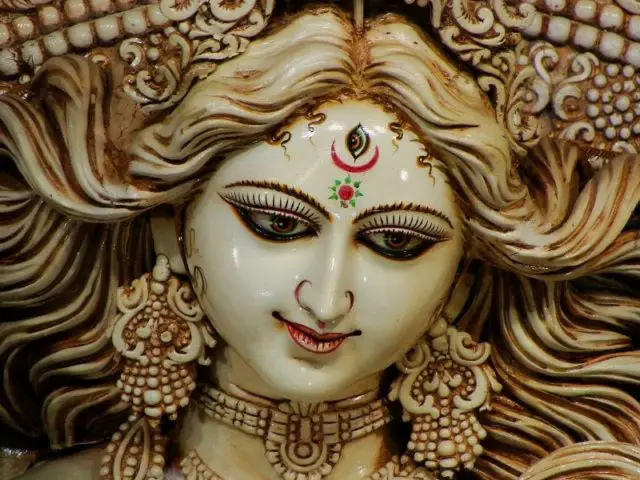Traversing through the calles of Costa Rica, it would not be a surprise to see churches and cathedrals stand out proudly. Crucifixes on the walls and religious altars in every home are a must for any traditional Tico home.
With colonization Catholicism, and later on other variants of Christianity made their ways into every household in the region. Like other Latinos, Costa Ricans are also spiritual with the elder generation being more ‘church-going’ and the devoted.

As festivals and religious fest light up the country with feverish participation, one may notice the spiritual connection of its citizens which defines the nation. Indeed, festivity, spirituality and its Pura Vida lifestyle characterizes the small Central American state.
Similarly, India which is the home to many religions bases its spirituality on its age old civilization that survived countless invasions and attempts to erase it away. Hinduism and its allied Dharmic religions such as Buddhism, Jainism, and Sikhism have a common thread to bind them together.
Whereas others such as Islam, Christianity, Judaism and Zoroastrianism also find their space in this multi-fabric country. In fact, religiously speaking, no other country has exhibited such religious diversity as India. Spirituality experienced in India stems from its age-old civilization, modulated by other faiths and customs.
Often it is surprising to many that even though different faiths coexist together, it is devoid of any major clashes among them, and the answer lies in the inherent spirituality in the minds of its citizens. If I could take the liberty to compare with the Ticos, I may be able to safely ascertain that it is possible to be spiritual without being a fanatic.
While the Church does play a significant role in Costa Rica, the presence of a small non-Christian minority along with a rising evangelism explains the tolerance and appreciation of all forms of faith by Costa Ricans. Also one may safely observe that religion is the founding principles of both the republics, with its deep rooted customs and traditions but without any hint of dangerous fanaticism.
Like in Costa Rica, the average Catholic family passes on religious teachings by the word of mouth or through regular church services and where religious functions such as baptism, marriage ceremonies, and funerals are a time to bond with other another, in India too religious consciousness is passed down generations in the same way.
Most of us have grown up listening to the great Hindu epics such as the Ramayana and the Mahabharata from our elders and also to the stories of other Hindu Gods and Goddesses. In fact spirituality is so entrenched in our ethos and with a strong civilizational touch that in the 1990s Television serials such as the Ramayana and the Mahabharata were closely watched by the entire population and discussions continued for hours.
Like Costa Rican children who would be amazed to listen to the stories about Jesus Christ and his ultimate sacrifice for the larger good of humanity, the miracles performed by the saints and the stories of Christmas, the crucifixion and the resurrection of Christ, Hindu children also grew up listening to stories of how Goddess Durga defeated the demon king Mahishasura, the creation of the universe by the Gods, the role of Lord Krishna in the Mahabharata and how Lord Hanuman (the monkey God) and an ardent devotee of Lord Ram helped him in his mission to rescue his wife Sita from the clutches of Ravana. Therefore, spirituality in both countries is also informal in nature which showcases the inherent religiosity of the people.

Now with the Covid induced pandemic calling for newer forms of greetings, the Indian greeting ‘Namaste’ that is performed with joining the palms together has become a new fashion in the world. It would be surprising to know that this form of greeting has been in vogue in India since ages and is adopted by everyone.
It signifies the communication between the souls which exhibits the deep spirituality of Indians in day to day lives. Indeed, for the vast majority spirituality is a daily affair. It starts with the morning prayers usually performed by elders and joined by the others and the evening prayers in which the entire family comes together.
Similar to the Catholic prayers and meetings, Hindu temples regularly organize such events which are attended by everyone. Interestingly the use of totems and religious articles is quite similar in both the regions. While the use of crucifix and rosaries is common in Costa Rica as a mark of spirituality and identity, in a similar fashion the use of Hindu style necklaces, sacred threads tied around the wrist, Rudraksh (sacred beads), and other religious articles are common here. It is therefore a common sight in homes to see an altar with oil lamps, incense sticks, flowers, and idols of various Gods and Goddesses.
In Cost Rica too, it is common to see the altar with the idols of Jesus Christ, Mother Mary, and other saints with candles. India is even a step forward when it comes to drawing imagery of nationalism based on its rich civilizational heritage, where it personifies nationalism to a Goddess popularly known as Bharat Mata (Mother India) a Goddess with a lion as its mount and holding a saffron flag.
Conceptually speaking, while the concepts of salvation and the original sin are a part of the common folklore in Costa Rica owing to its catholic heritage, similarly the concepts of dharma(righteousness) and karma( the result of anyone’s actions) are a part and parcel of our society.

While Catholics believe in the eternal life promised as a believer in the Blood of Christ, the resurrection of the Saviour and the Second Coming of Christ we Hindus still hold on to our beliefs of reincarnation or eternal Moksha (liberation) from the cycle of life and death. Moreover, Hindus staunchly believe in the four stages of time depending on the karmic actions and adherence to piety which are classified into the Satyug, Tretayug, Dvaparyug and the Kaliyug, and in all these stages of time with each progression into the other stage people turn sinful and evil. One may find a strong resemblance to the Christian concept of End of Time heralding the Second Coming of Christ.
Like Costa Ricans, nature is much appreciated in India owing to its civilizational heritage. Costa Rica which is proud of its environment and its defence is an inspiration for the world while in India, animals and nature find their special mention in the traditional folklore with Gods and Goddesses owning animals as their mascots. One should not be surprised to see people revering trees and animals in India which again is a derivation of its civilizational heritage.
These religious conceptions have also shaped the psyche of the citizens and the functioning of the republics as both Hinduism and Christianity are based on the principles of sacrifice, tolerance and appreciation for others, and this allows a state based on these ideas to function like proper democracies allowing dissent and criticism without negating its civilizational identity.
While there are obvious functional differences between the largely Catholic and Hindu populations of Costa Rica and India respectively, some of the similarities are striking. Both the countries have a remarkable sense of appreciation and tolerance for other faiths.

Costa Rica which recognizes Catholicism as its official faith has no record of any state-based discrimination towards others and ticos are known to be inquisitive of other faiths, religions, and cultures. India on the other hand, has beautifully based its existence on the essence of the Hindu civilizational heritage perfectly bonding its tradition and modernity in a sublime blend. Despite being a secular state, India has a tradition of appreciating every religion without any discrimination. In fact, Hinduism is so entrenched in our civilizational ethos that it is the spiritual backbone of the nation.
It is still one of those few countries in the world where we still hold strong to the ancient Hindu philosophy of VasudaivaKutumbakam (the world is one family) and where we treat guests as Gods espoused by the principle of Athithi Devo Bhava. A spiritual balance still permeates India where traditional medicinal knowledge based on Ayurveda, Yoga, and traditional architectural knowledge based on Vaastu Shastra and modern science coexist and despite this, fanaticism is absent in the country.
Similar to both the regions, religion is an organic base for these modern nation states. Costa Rica which has a proud and rich heritage and fought hard for its independence allowed religion to permeate the society and offered a spiritual connection to the Patria, and despite being an overwhelmingly Catholic state has maintained its spiritual decorum as an epitome of harmony in the world.

Both the states embrace their religious identity and pluralism in a positive sense, devoid of any fanaticism and cherishing their spirituality for the world to see. No wonder, Costa Rica stands out in the world as a top sought destination to visit and retire and its religious life adds colour to its splendour. India with all its diversity exhibits a curious spiritual bond between all the groups and communities and where this very diversity is celebrated and not erased away. Even though they are separated by miles one may not have to look hard to observe the basic sense of tolerance, mutual appreciation for one another and inbuilt spirituality colours the society in Costa Rica and India.
To this, one may say that both the states have embraced their spirituality in an impeccable manner rendering them into a cynosure for the world where the Pura Vida and the Dharmic way of life stand out as leading examples.

Dr. Arnab Chakrabarty Guest Lecturer, Department of International Relations, Sikkim University,Gangtok, Sikkim, India.

